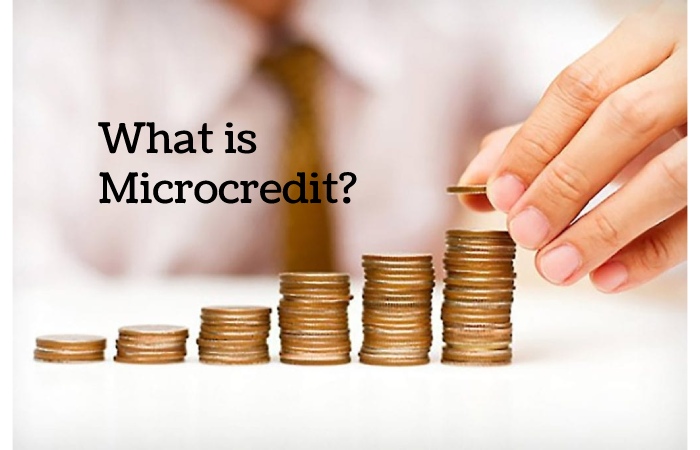Introduction
Microcredit is a financing modality characterized by lending small amounts of capital to promote productive projects of SMEs in the different sectors of the economy.

Microcredit is a loan that small businesses or micro-enterprises can access to finance fixed assets or working capital.
Fixed Assets: It is a line of credit for purchasing machinery, equipment, or real estate for your business.
Working capital is a line of credit destined to acquire your company’s raw materials, supplies, inventories, and other resources.
To access Microcredit, you do not require credit experience. In addition, you have accounts with a fixed fee during the loan term.
Advantages of Microcredit
This tool is designed to facilitate access to financing for productive projects, building, supporting, and improving the conditions on their excellent performance; Among the qualities of Microcredit, we can highlight:
- Access to resources without having a credit history.
- The security of having traditional financing, for which it has all the rights of the financial consumer. Learn more here.
- Cheaper financing than with an informal credit (Drop by drop). More information here.
How And Why To Use Microcredit?
This scheme is designed for productive units and must be used in the assignment of working capital (money for your company’s expenses) or the purchase of fixed assets (machinery, technology, furniture, among others)
Working Method In Developing Countries Microcredit
In developing countries, microloans are occasionally given to individuals, and often individuals are organized into solidarity groups of 5 to 20 people, primarily women. In these groups, the members of the group guarantee each other.
Group members seek each other out because they know and trust each other. As a result, assessing creditworthiness takes less time for the bank employee. More importantly, this is a way to keep the number of working minutes per new customer manageable for bank staff.
A second factor is social control and pressure on each individual to repay the loan in the event of default. The other members of the group will be at a disadvantage. This social pressure is not so bad in practice.
The lending organization often prefers to give credit to women. This gender-based distinction is legitimized by statistics that women in developing countries pay more reliably. It would also promote the emancipation of women.
Cost-Benefit Microcredit
Microfinance institutions generally aim not to make a loss because they strive for long-term sustainability. The interest rates of these microcredits are much higher than in the West, approximately between 15% and 50%. It is mainly due to costs. Providing a loan of EUR30-300 in Africa takes much longer per EUR than providing a much larger loan in Europe. Regular (often weekly) payments are organized efficiently, but they also cost working time. However, local customers think that the interest rates are not so bad because the local loan sharks often charge between 10 and 50% per day compared to the alternative.
- Use the microcredit money for business-related goals. If you don’t use these resources properly, you can lose capital and turn credit into hard-to-pay debt.
- The timely payment of the microcredit installments helps you make good use of your finances and have a credit history that allows you to apply for other banking products more efficiently.
- With Microcredit, you can cover some economic contingencies of your business.
- Request microcredit in a single bank. If you have several loans from different financial institutions, you may not meet your goals, and you may not put the money to good use.
If you wish to have more information about this product, you can contact the Sevillana or come to our offices.
How To Access Microcredit?
Public and private units can grant microcredits, but the latter has boomed recently.
Depending on what the Microcredit is intend for, the characteristics and conditions of the loan will be different. Financing a business will not be the same as funding an appliance. However, if the business idea is promising, you can get preferential conditions. The amount request and the loan’s repayment term vary according to the issuing entities.
Microcredit in Two Important Particularities:
firstly, it is a loan without guarantees, although there are different strategies to replace them, either through in-depth analysis of the projects or through support entities; second, the loan is focus on productive activities.
Microcredit Management Institutions
- Social entities that mediate with savings or alternative financing entities. Thus, they grant microcredits from the remunerated savings of other natural or legal persons.
- Social entities that do not intermediate with savings. In this case, the microcredits come from non-reimbursable funds obtained from donations and grants.
- Private credit entities whose funds for Microcredit have a banking origin.
- Public credit entities, with funds for Microcredit from the market and shared risk with other private credit entities.
Conclusion
Microcredits for society are essential since they promote the financial inclusion of groups that in some way cannot have access to certain banking services or different types of financing. There are also microcredits specially design for women, which seek to empower and advance marginalize communities. Microcredits also have the possibility of becoming personal loans or for home remodeling.
Also Read: Best Laptops For Students Programmers 2022
Related posts
Featured Posts
What Is A Web Project? – Phases For Planning, and More
Introduction Web Project The term ” web project ” can designate different development types, including technical creation, content management, data,…
10 Benefits of Eating Roasted Gram
In this article, we will talk about the 10 benefits of eating roasted gram. The roasted gram is also known…


